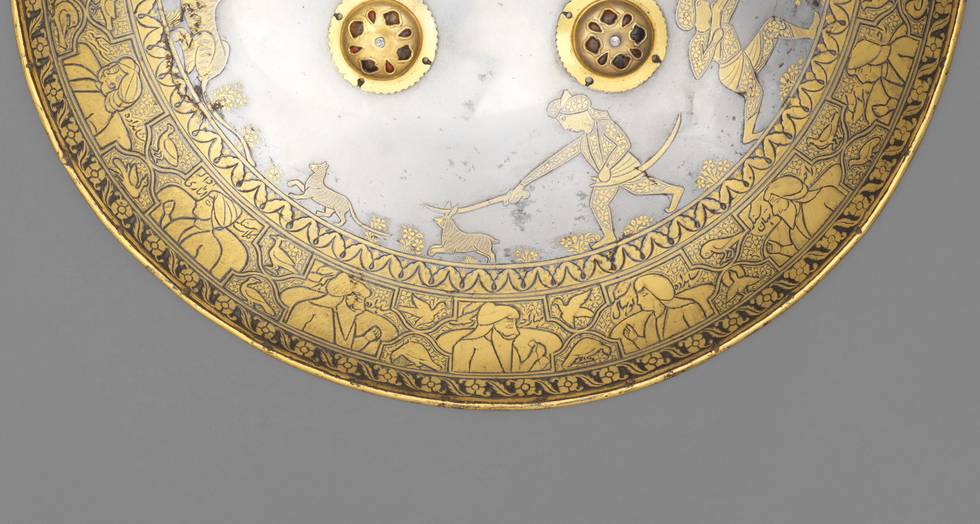Location: Punjab
Dates: Probably 1850–75
Materials: Watered steel, iron, gold and paste
Measurements: Diameter 40.5 cm
Inv No: OA2188
This shield is composed of two parts – an inner steel plate and an outer iron brim – both beautifully decorated with figural designs. A circular hunting scene can be seen unfolding in the inner plate, with animals ranging in size from tigers and antelopes to hares, civets and birds. The hunters are armed with bow and arrow, spear, sword and musket.
The outer border contains sixteen portraits of Ranjit Singh, his family and key nobles connected with the Sikh court. They are each chiselled in the iron, within individual cartouches, separated by pairs of birds. Each figure can be definitively identified by their Persian inscriptions.

Ranjit Singh is portrayed with a long beard and is holding a handkerchief in his left hand. Clockwise from the maharaja, are: Shahzada (Prince) Kharak Singh, Gulab Singh Atariwala, Shahzada Sher Singh, Shahzada Pratap Singh, Raja Lal Singh, Shahzada Duleep Singh, Raja Tej Singh, Chattar Singh Atariwala, Sher Singh Atariwala, Jowahir Singh, Raja Suchet Singh, Raja Gulab Singh, Raja Hira Singh, Raja Dhyan Singh and Shahzada Nau Nihal Singh.
The placement of the portraits means that Ranjit Singh’s two most important heirs for his line of succession are flanked on either side of him: Kharak Singh, his eldest son, is to his left, and his grandson, Nau Nihal Singh, is to his right.
Many of the portraits are of key individuals during the period following Ranjit Singh’s death, suggesting that the shield was produced after his reign. This dating is further supported by the portrait of Ranjit Singh’s youngest son, Duleep Singh, who was five years old when he ascended the throne, but is here not depicted as a young boy, but rather as a pre-teen. The Sikh generals and courtiers who secretly aided the British East India Company’s forces during the Anglo Sikh Wars are also included: Raja Gulab Singh, Raja Lal Singh and commander-in-chief, Tej Singh.